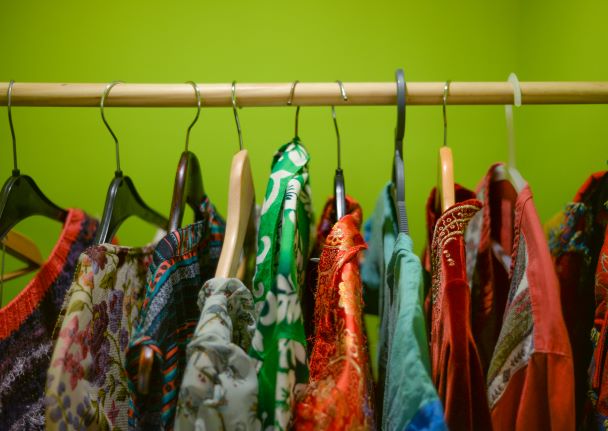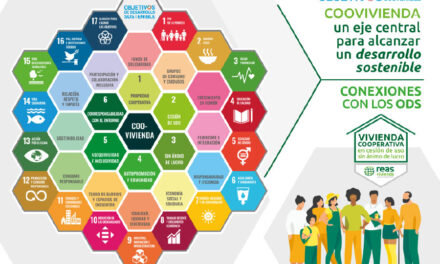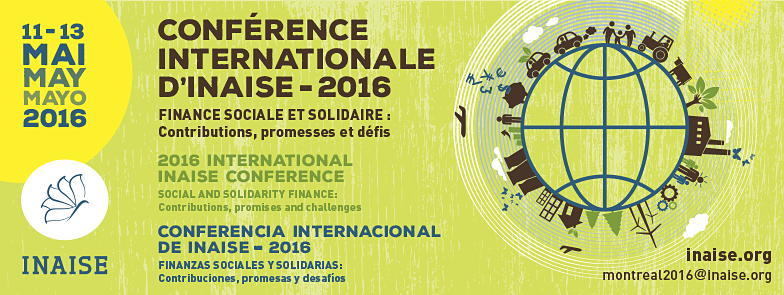Brenda Chavez article in Carro de combate is adapted from the report ‘Laundry of Clothes. The many ‘reputation washes’ of the fashion industry’, Portal de Economía Solidaria
We have been talking about greenwashing (in Spanish) in the world of fashion for months, its strategies, its messages and the reality behind it. But what does this mean on a practical level? Which brands are carrying out these strategies? Here are three outstanding examples of greenwashing that we have encountered during our #ModaBasura research, in which we have analyzed dozens of cases since 2019.
H&M: Innovation Circular Design Story
We start with this 45-piece capsule collection launched after the Climate Change Conference (COP26) in 2021. As we already told in a previous article, H&M has been one of the pioneers in using sustainability messages in its marketing campaigns and in 2019 it was criticized by the Norwegian Consumer Authority for the sustainable “misleading marketing” of its well-known Conscious collection. “We consider H&M’s claims misleading, not false. According to Norwegian marketing law, claims about the main qualities of an item must be easily accessible and understandable by the consumer. Claiming that a product is sustainable when it is not clear what in particular makes it so is, in most cases, misleading. Since H&M does not provide accurate consumer information as to why they have a Conscious label, we conclude that consumers have the impression that they are more sustainable than they really are,” said Elisabeth Lier Haugseth, head of the Norwegian authority.
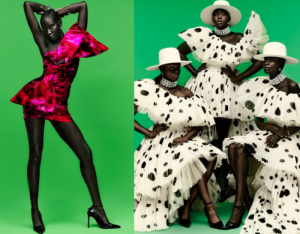 In the case of the Innovation Circular Design Story, it is a collection made of monomaterials (a single material) designed to facilitate recycling and designed to be disassembled. However, the majority material is recycled polyester, in many cases of marine origin, something that the organization Changing markets has qualified as a widespread greenwashing in the sector that misleads consumers, “false solutions” whose approach deals with the consequences of plastic pollution and that does little to reduce it at its source. Recycled polyester, like conventional polyester, is derived from fossil sources (and petrochemicals), the main cause of climate change. In addition, each garment of this material releases hundreds of thousands of microplastics during washing.
In the case of the Innovation Circular Design Story, it is a collection made of monomaterials (a single material) designed to facilitate recycling and designed to be disassembled. However, the majority material is recycled polyester, in many cases of marine origin, something that the organization Changing markets has qualified as a widespread greenwashing in the sector that misleads consumers, “false solutions” whose approach deals with the consequences of plastic pollution and that does little to reduce it at its source. Recycled polyester, like conventional polyester, is derived from fossil sources (and petrochemicals), the main cause of climate change. In addition, each garment of this material releases hundreds of thousands of microplastics during washing.
Also, studying this capsule collection in depth, we have found that, despite being presented as a monomaterial, it mixes materials such as wool and recycled polyester, which hinders its recyclability. And in its corporate communication, the company also alleges that the “garments are designed to be used, shared, repaired and recycled”, since they are manufactured garments designed for circularity, but it does not indicate how they can be shared, repaired, or recycled and, above all, does not enable any effective means to contribute to it.
Finally, the designs of the collection are so “trendy” that they question their long-term durability and aesthetic longevity, a great contradiction. Real circular sustainable fashion advocates timeless pieces for multiple occasions that last a long time.
Inditex: Oysho’s Yoga & meditation and Join Life collections
We continue with the Inditex group. In September 2020, Inditex’s intimate apparel brand, Oysho, launched the first collection for yoga and meditation, consisting of modal pants, T-shirts, Organic cotton sweatshirts, jackets, cardigan, jumpsuit and bras: “Playing Yoga & Meditation a sustainable collection that is committed to the environment,” the statement said. In its 2021 report, Inditex states that the organic cotton it uses is “organic in BC transition”, that is, from the Better Cotton initiative, a highly controversial certification for allowing transgenic cotton and for its involvement in the scandal of forced labor of the Uyghurs in Xinjiang, China, as we explained in the second part of our report. The infinite reputational washes of the fashion industry.
(…)
The collections are part of what the company calls “maximum sustainability labeling,” which it has called Join Life., a standard established by Inditex itself to certify itself and its sustainability – of which it does not specify its methodology – under which it says it labels garments that are produced using “the best processes and the ‘most’ sustainable raw materials”, although it does not specify on what basis they are based to make such assertions.
(…) it does not solve at the root the real impacts of the sector on ecosystems, on the people involved in its production and supply chains, or on their territories or communities; nor the problems derived from its textile overproduction, its logistics, or its business models. Meanwhile, Inditex continues to increase its income statement and in 2021 tripled its profit to reach 3,243 million euros.
Lacoste: Save our species
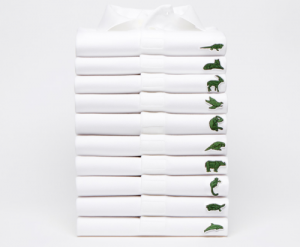 In 2019 Lacoste designed a special collection of polo shirts where it replaced its famous crocodile logo with logos with endangered animal species for the occasion. (…) A classic greenwashing consisting of donating, or collaborating, with a good cause, or social or environmental organization, in order to improve the environmental or social reputation of the brand, but without a correlation with the real sustainability of its business model.
In 2019 Lacoste designed a special collection of polo shirts where it replaced its famous crocodile logo with logos with endangered animal species for the occasion. (…) A classic greenwashing consisting of donating, or collaborating, with a good cause, or social or environmental organization, in order to improve the environmental or social reputation of the brand, but without a correlation with the real sustainability of its business model.
See the full article here.(in Spanish).
See more articles on fashion and sustainable fashion in the Portal de Economía Solidaria (in Spanish).
A complement to this article that talks about the transformation of the Atacama Desert in northern Chile in a mega dump, a direct and horrific consequence of the overproduction of the textile industry (among others):
- Chile vergüenza internacional: Desierto de Atacama, mega basural de la chatarrería mundial
- Shameful hidden cost of your fast fashion: Dumped in the Atacama desert, the mountain of discarded cheap clothes from the West that even charities don’t want Beth Hale for the Daily Mail, Jan. 2022
- And a small video (in French but suffice to see the images): here




